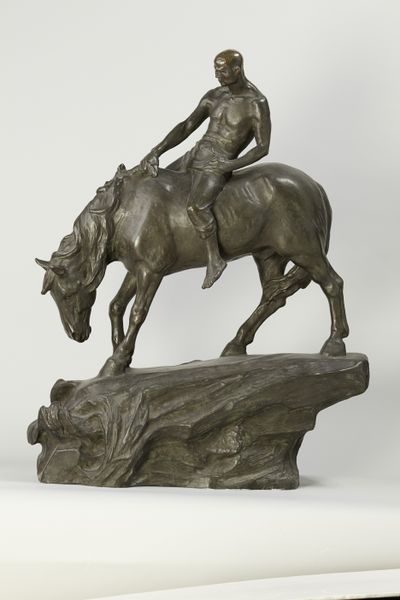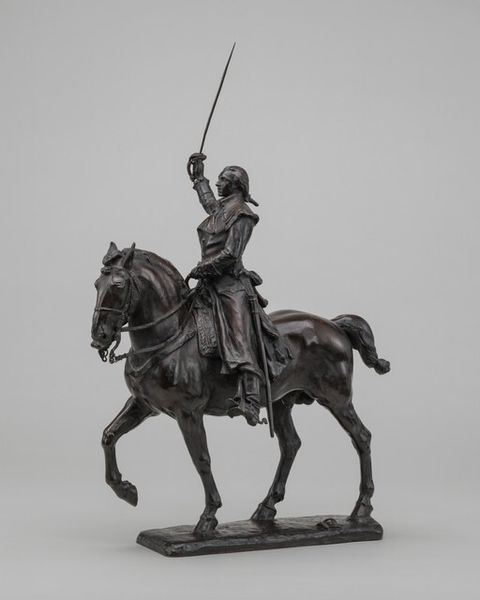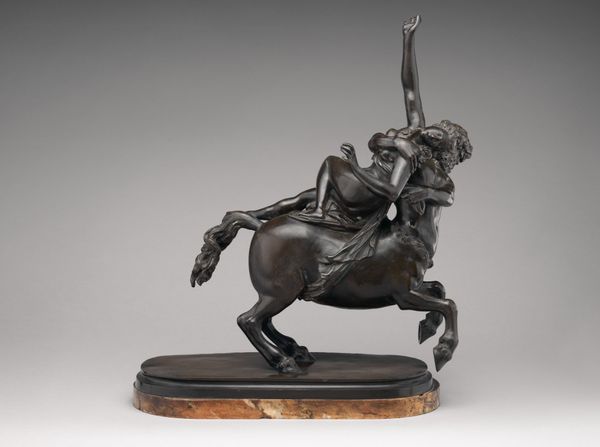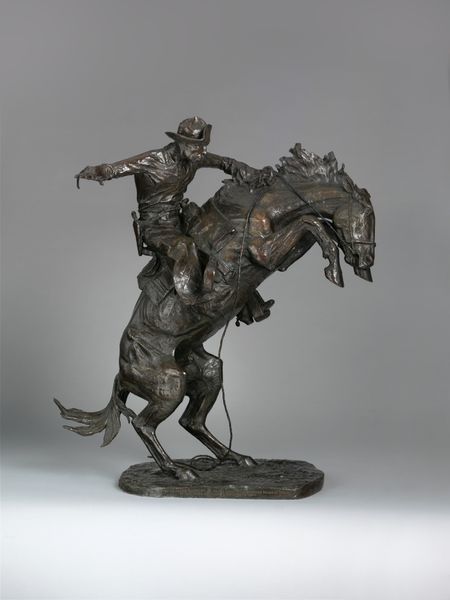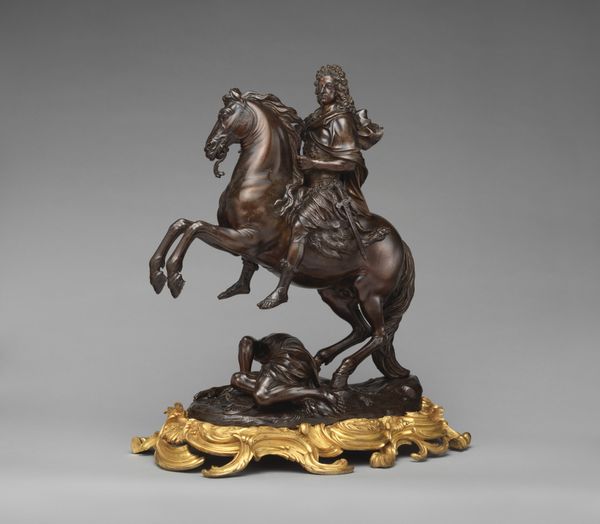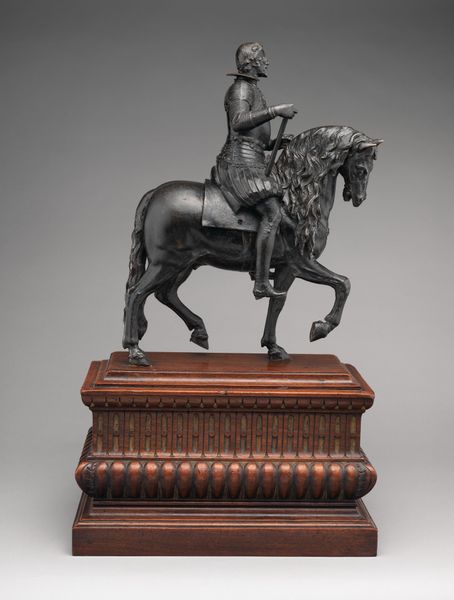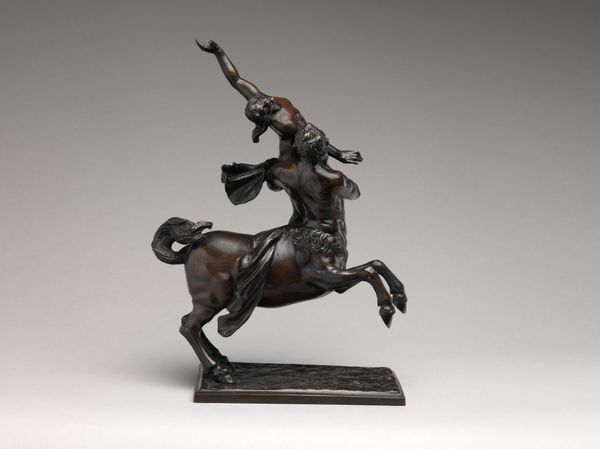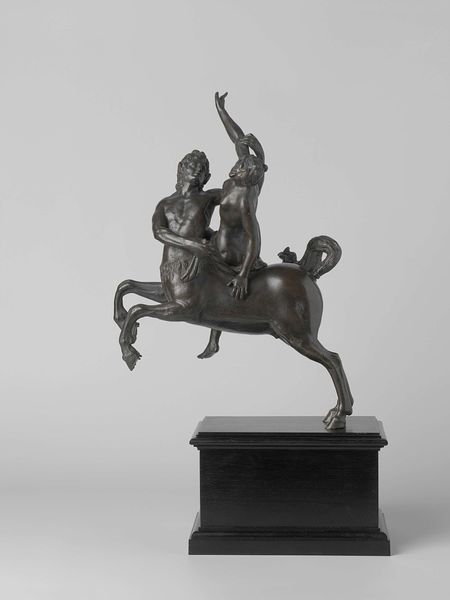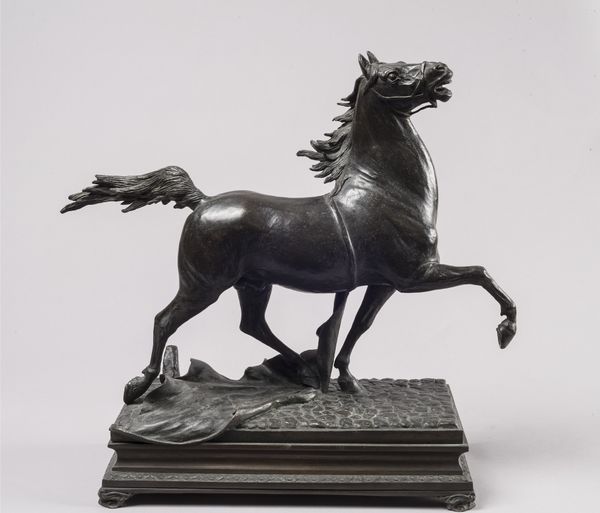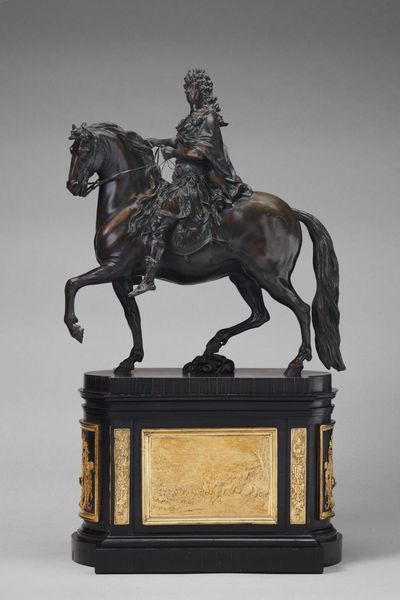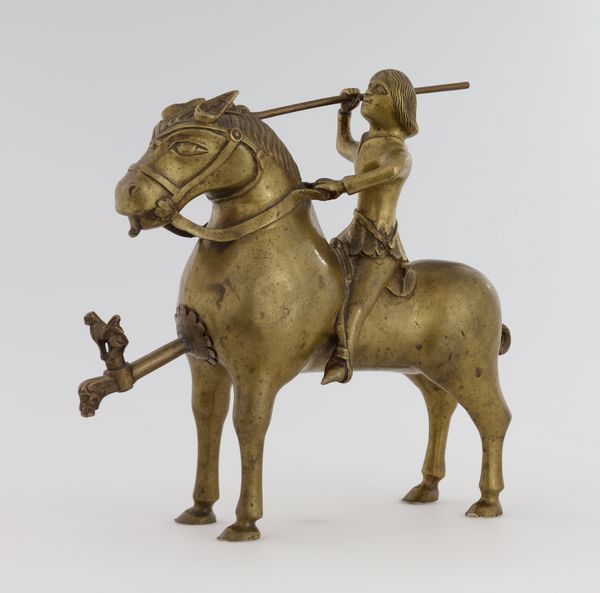
bronze, sculpture
#
sculpture
#
bronze
#
sculpture
Dimensions: overall: 101.6 × 80.01 × 36.83 cm (40 × 31 1/2 × 14 1/2 in.) gross weight: 158 lb. (71.668 kg)
Copyright: National Gallery of Art: CC0 1.0
Curator: This bronze sculpture is titled “Indian Warrior,” created by Alexander Phimister Proctor between 1898 and 1918. What are your initial impressions? Editor: The piece feels imposing, doesn't it? There's a certain stoicism in the figure, a sense of power conveyed through the horse's pose and the warrior's upright posture. However, I can't help but wonder about the narrative it's constructing. Curator: That's a key question. Proctor was known for his representations of the American West. The work reflects a prevalent fascination and romanticization of Native American cultures at the time. These images were circulating in popular media, shaping public perception. Editor: And often, distorting it. Was Proctor trying to depict an accurate representation, or was he conforming to and perhaps perpetuating, an existing idealized stereotype? It looks like an overtly masculine, even theatrical portrayal. Curator: His work walks a fine line. Proctor spent time observing and sketching Native Americans, aiming for realism. He also wanted to convey the power of the American West. Contextually, there were very complex power dynamics at play during this era with westward expansion and governmental Indian policies, including forced assimilation. How could this piece possibly avoid getting entangled in that complex socio-political context? Editor: Right, we can’t separate the image from that reality. Who was this warrior in truth, beyond the bronze? What nation, what battles did he fight? Those questions get erased, replaced by a grand, arguably glorified, and sanitized image. Curator: I think it makes us consider how art both reflects and shapes our understanding of history. How this piece ended up in our collection certainly has layers to consider, given that very history. Editor: Absolutely. It’s a visually compelling piece that demands that we look beyond the bronze, to examine the power of representation and the legacy of the American West.
Comments
No comments
Be the first to comment and join the conversation on the ultimate creative platform.
